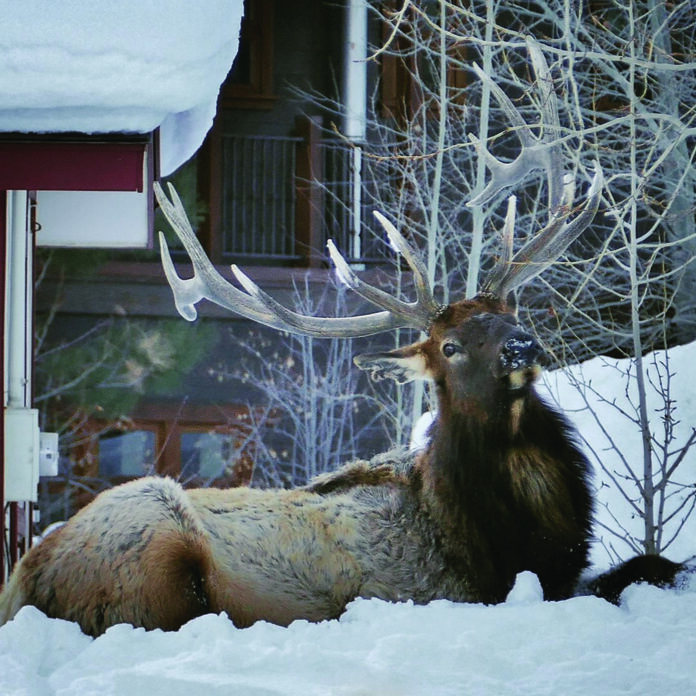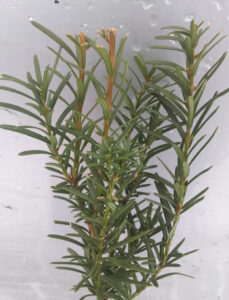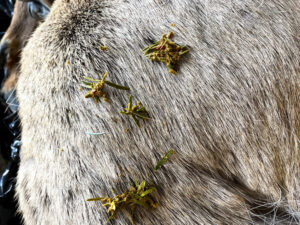
Fish & Game says 2016 landscape ordinance falls short
By Eric Valentine

Despite a 2016 Blaine County ordinance restricting the planting of noxious plants, including exotic yew, three elk—two cows and one calf—were found dead Jan. 18 after eating the toxic plant north of Hailey near The Valley Club. Two additional elk were found the next morning, a calf just north of Hailey and a yearling in Sun Valley.
Fish and Game conservation officers who investigated the reported dead elk confirmed the presence of yew in the digestive system of all the elk but have yet to find the specific location of the plant or plants that were ingested.
Residents should inspect the landscaping around their homes and remove all yew plants in an effort to keep wildlife and pets safe, especially during winter months when wildlife moves down into historic winter range, now occupied by community neighborhoods and private residences. If removal is not possible until spring, the bushes should be securely fenced so that wildlife cannot get access to the plants, or the plants should be tightly wrapped with burlap.

A field necropsy of the elk showed that the elk were weathering the winter well, evidenced by ample rump and back fat reserves and healthy bone marrow, which reflects the body condition of wildlife such as elk.
According to regional wildlife manager Mike McDonald, landowners need to be aware of the types of vegetation they purchase and plant on their properties.
“I realize that it’s hard to dig up mature landscaping but everyone needs to do the right thing for wildlife, and even to protect your pets, by removing plants like exotic yew. It takes a surprisingly small amount of yew to kill an elk, deer or moose, which are all species that residents can see throughout the Valley, almost daily,” McDonald said.
Many plants contain toxic chemicals which may be dangerous to humans, pets, and wildlife. Yew is an evergreen tree commonly used in ornamental plantings or landscaping that contains highly poisonous chemicals known as alkaloid taxines. Two species of yew, Japanese and European, are particularly toxic.
Information gathered from the Blaine County website show that in February 2016 the Blaine County Board of County Commissioners unanimously passed County Ordinance Number 2016-01, declaring certain plant species as county noxious weeds, prohibiting the sale, planting, and possession of any plant on the county noxious weed list, and providing penalties for violations.
The ordinance is a response to the fact that during the winter of 2015 and 2016 foraging wildlife consumed toxic yew plants in residential areas that led to the death of at least 20 elk throughout Blaine County.
For more information, contact the Magic Valley Regional Fish & Game Office at (208) 324-4359.
